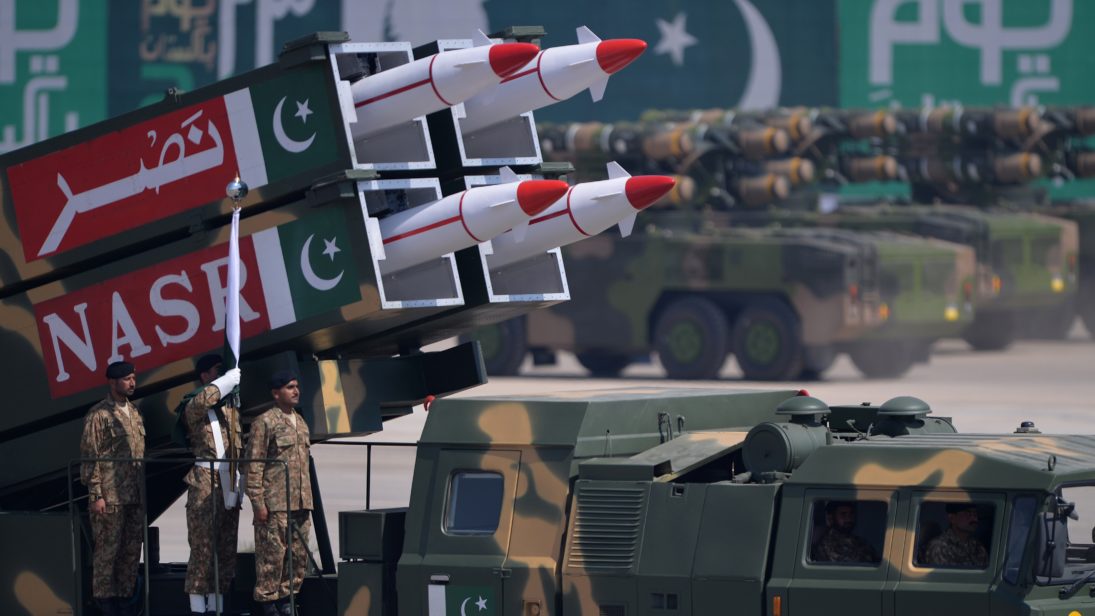
“If the adversary feels that you are unpredictable, even rash, he will be deterred from pressing you too far. The odds that he will fold increase greatly, and the unpredictable president will win another hand .” –Richard Nixon
Recently, Pakistan was questioned once again for having tactical nuclear weapons (TNWs), in a Defense One article by political scientist Christine Fair. In comparison to other states with similarly variant tactics, Pakistan is facing much more criticism over this strategy. Notwithstanding international pressure, Pakistan considers the development of tactical nuclear weapons as an assurance of safety and security against an eventuality of provocation from its next door neighbor. One cannot deny that the Indian approach is at least somewhat embedded in the Cold Start doctrine. Pakistan’s battlefield nukes also address the problem of its conventional asymmetry vis-a-vis India. Securing itself from any hostile move is the universal right of a state, important for the safety of its citizens.
Pakistan developed TNWs, which some have called “weapons of peace”, to counter New Delhi’s Cold Start doctrine. This was to deter a likely spasm from India, which re-oriented border corps to help launch a quick response in case of war with Pakistan.
There is nothing new in Pakistan’s nuclear developments—it’s not the only one in the region developing nuclear weapons. In fact, it is India that is purportedly developing a secret nuclear city to produce thermonuclear weapons—this should cause concern. Additionally, India’s multiple nuclear deals with NSG member states, resulting in an increase in its fissile material stockpiles, have the potential to increase tensions in the region.
India has contemplated conventional options below the nuclear level by considering strategies like Cold Start in response to any future low-level crisis with Pakistan. On the other hand, according to Pakistan foreign office spokesperson Qazi Khalilullah: “Pakistan has put forward several initiatives to promote conventional and strategic stability in South Asia, including the proposed Strategic Restraint Regime but India has failed to respond positively towards Pakistani initiatives.”
In her article, Fair also made the following assertion: “Pakistan is the only country currently boasting of making increasingly tiny nuclear weapons.”However, the author focuses only on Pakistan’s TNW developments, and ignores Indian development of Pragati and Prahaar, which are short-range tactical missiles that could possibly carry nuclear warheads. As I have argued elsewhere, “Pakistan’s decision to develop short-range-low yield (SRLY) nuclear weapons is not an initiative, rather a measured reaction to the Indian adoption of a dangerous nuclear doctrine to fight a limited war under Pakistan’s nuclear threshold.” This shows that Pakistan strictly abides by the concept of credible minimum deterrence, and that its nuclear program is only aimed at maintaining peace and stability in South Asia.
Reports of alleged Indian misadventures and terror activities carried out to create unrest go unnoticed by the international community. The Pakistan military has accused India of being involved in fueling insurgency in Baluchistan and unsavory activities in Karachi. Indian spies are suspected of operating through a network of Indian missions in southern and eastern Afghanistan, and Pakistan’s former army Chief Gen. Kayani has alleged that India’s intelligence agency RAW recruits youth for terror activities against Pakistan.
Moreover, Fair’s analysis of the Kashmir issue runs against the traditional Pakistani narrative. It is clear that Kashmir is disputed territory—the issue will remain unresolved until India sits at the negotiating table and gives the right of self-determination to Kashmiris.
Nonetheless, there are other facts that need to be considered as well. While incessantly accusing the army of instigating a full-scale war over the Kargil operation, one must recognize something—in the words of former journalist Myra MacDonald, “there is no strategic advantage in controlling these passes and never has been—the idea sometimes floated by the media that the Pakistan Army could use these to link up with China and threaten India makes no sense when you see how difficult the terrain is.”
Pakistan supports peace, and recognizes that war is not an option despite challenges on its borders. Pakistan’s nuclear program is solely for deterrence against India, and to stabilize the subcontinent.
***
Image: Aamir Qureshi-AFP, Getty


